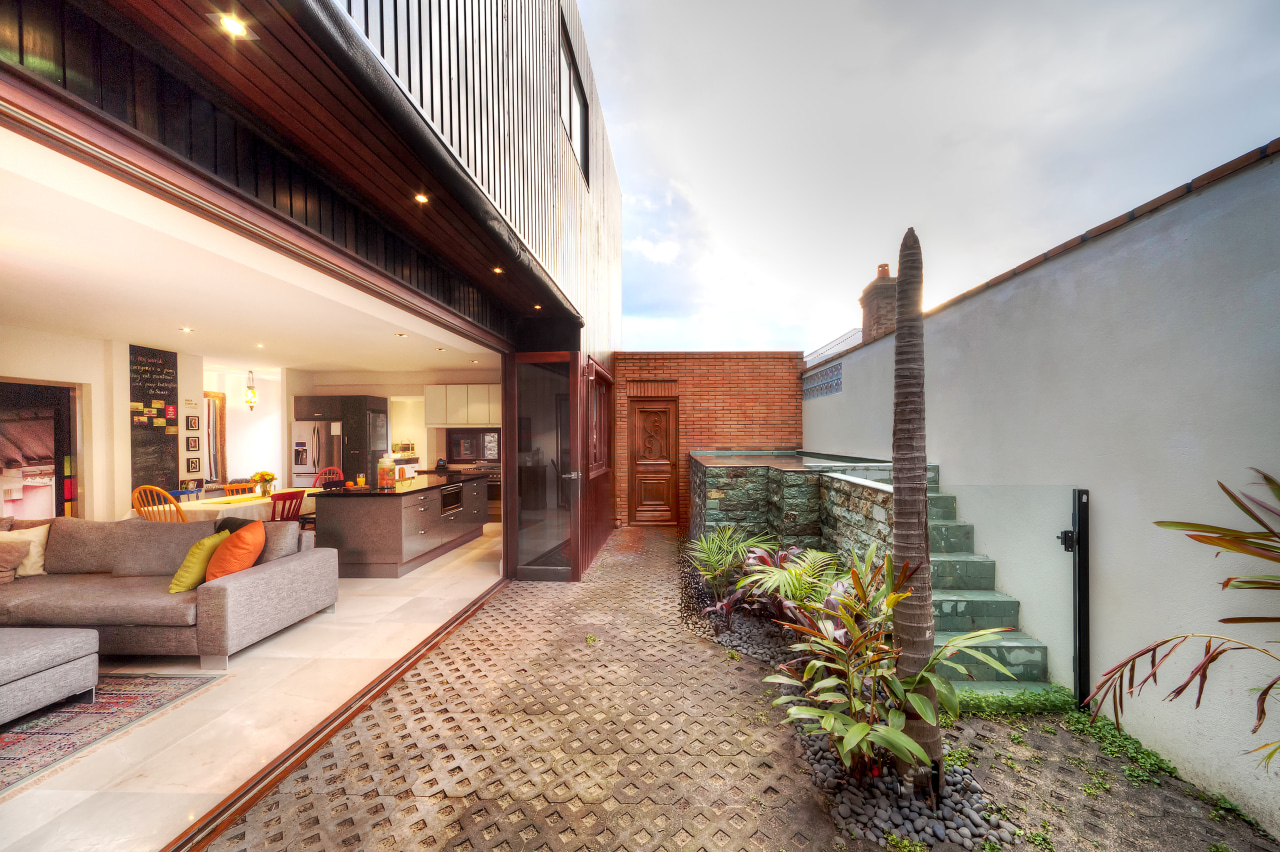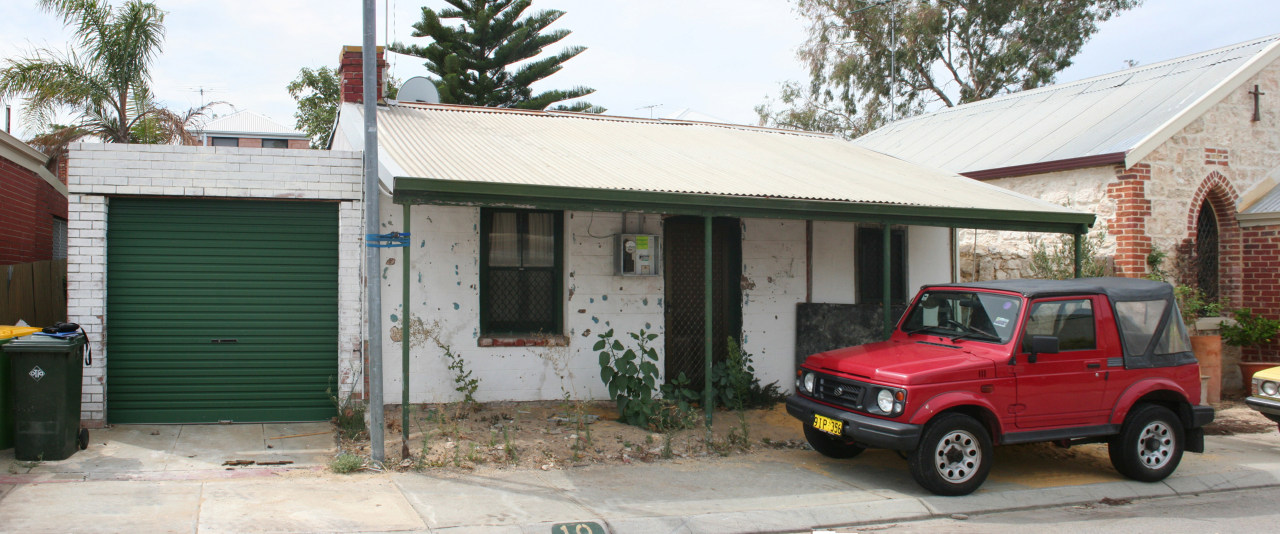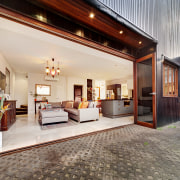Small beginnings
Restored worker's cottage with addition

Heritage-listed properties pose plenty of challenges for architects and designers, especially when the homes are small and the building sites are tight.
This property, in a prime location not far from the beach, fell into that category. An 1897 worker's cottage on the site, built from limestone, needed to be restored. But at just one room deep, it was never going to suit a family, says project director Adrian Fratelle of Ecohabit Homes.
"We needed to build an entirely new house behind the cottage, but it was not straightforward," Fratelle says. "Local regulations determined that the addition had to be a complementary, yet stand-alone structure there needed to be a clear separation physically and aesthetically."
The architect's solution was to contrast the traditional character of the cottage with a blackwashed cedar-clad volume that frames the building in front.
"In addition to planning a new house, we needed to restore the cottage, which was derelict," says Fratelle. "The owners, who undertook all the building work themselves, chipped off numerous coats of render, which had completely hidden the beautiful limestone. At some stage, many decades ago, lean-to accommodation had been added to the house. This was all removed, and the interior was gutted and completely relined."
The team also rebuilt the veranda, with new balustrading providing separation from the pavement the woodwork was painted a soft smokey blue shade. The cottage is now an inviting home office, complete with sofa and wine cellar.

The old building is connected to the new volume via a flat-roofed linking element that provides a circulation area and laundry. But the main entry to the house is reached by a narrow path to the right of the cottage.
"This is a very tight site, so every square metre had to be maximised, both inside and out," says Fratelle. "We also wanted to orientate the house to the north, so it would be warmed by the sun in winter. At the same time, we needed to be able to cool it down quickly in summer."
Fratelle says the timber construction helps achieve these aims. The house is well insulated, but the bedrooms on the upper level can be cooled more quickly in the evenings, than would be the case with a traditional double-brick construction.
The house opens to an outdoor living area on the left side of the site. The architect managed to include an elevated plunge pool at one end of the patio, and a children's play area at the other. A retractable awning over the 4.5m-wide opening provides welcome shade in the summer.
"With plenty of cross ventilation, the owners rarely need to use the air conditioning," says the architect. "Being so close to the coast, the house benefits from the sea breezes."
The main living area runs the full length of the house, with the kitchen wrapping around the walls on the north and west. A large island helps to separate the work area from the dining table, and provides plenty of storage and bench space for food preparation and serving. And although dark materials were used, these are reflective, so they bounce light around the room.

A door in the kitchen opens to the transition zone linking the old and new buildings. The kitchen also overlooks a small landscaped courtyard between the two buildings, where laundry can be hung to dry.
Bedrooms are positioned on the upper level, and can be reached by a staircase or by a lift. In the living room, the doors of the lift feature a photographic mural depicting the interior of an old cottage.
"Again, we had to maximise the space on the upper floor, to accommodate three bedrooms and two bathrooms," Fratelle says. "We positioned the family bathroom on the north side, so the sun can warm the space in winter, and help to keep it dry."
"To create a more spacious look for the master bedroom, we introduced Perspex sliding doors for the wardrobe. The highly reflective panels lighten the room."
The ensuite bathroom features ceramic tiles with a warm metallic patina that is in keeping with the heritage connection.
Story by: Trendsideas
Home kitchen bathroom commercial design
Renovation Trends Vol. 30/5
Renovation Trends showcases innovative makeovers – big and small. The book features kitchens, bathrooms, interior makeov...
Read More












